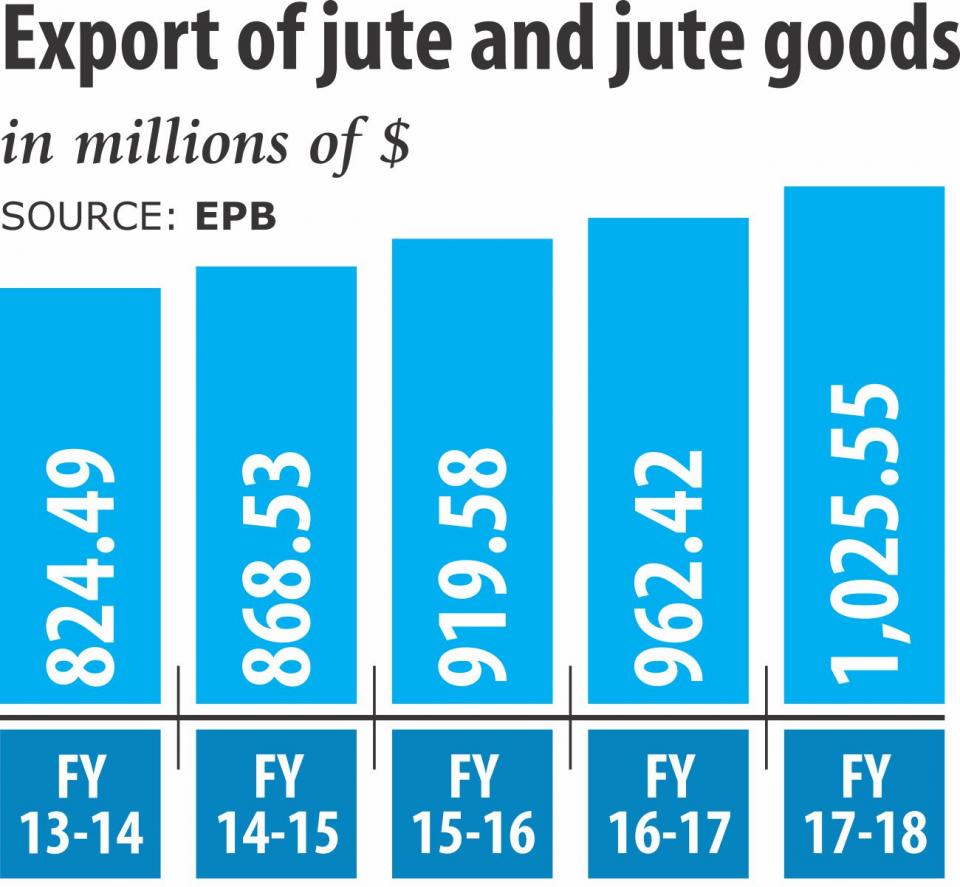Jute and jute goods put in a solid shift in the overseas market in fiscal 2017-18, crossing the $1 billion mark in receipts after five years, much to the cheer of the government as it endeavoursto lower dependency on garment.Last fiscal year, the sector brought home $1.02 billion, up 6.56 percent year-on-year, according to data from the Export Promotion Bureau. Jute and Jute goods is the third sector to crossed the $1 billion-mark in export receipts after apparel and leather and leather goods.“The international market trend is so far good,” said HM Rezaul Karim, vice-president of the Bangladesh Jute Goods Exporters’ Association.The sector’s turn of fortune comes as the use of the natural fibre is on the rise worldwide for a growing shift towards an eco-friendly lifestyle.Besides, the demand for jute sacks is on the rise from African countries like Sudan, Kenya, Ivory Coast, Kenya, Nigeria, Egypt, Cameroon, Tanzania and Uganda, where they are used for food grain packaging.Karim, whose firm Bico Jute Fibres exports jute and jute goods worth $20 million a year, lamented that exporters do not enjoy any financial incentive from the government, although the local manufacturers are enjoying 7.5 percent cash incentive from the government.

Another important reason for the rise in the sector’s exports is the use of the natural fibre by global car giants like BMW, Mercedes-Benz, Toyota, Renault, Mitsubishi, Volvo, Audi, Daimler Chrysler and Ford, said Azazur Rahman, owner of Supreme Fashion and Fibre, which ships 600 tonnes of raw jute a year.The global car industry needs about 100,000 tonnes of jute a year, of which 12,000 tonnes come from Bangladesh, the exporters said.Bangladesh has the potential to become the main supplier of jute to the global automobile industry, which uses the natural fibre to manufacture the car interiors.Previously, the car industry used glass fibre to manufacture the interiors. But glass fibre is not recyclable or biodegradable, so in 1994 the search for a green alternative began. Jute emerged as the frontrunner.As a result, Bangladesh has the potential to export jute and jute goods worth $5 billion to $7 billion annually in the next seven years.“We have a big potential also in the European markets as the demand for natural fibre is increasing in the western world,” Rahman said.
















